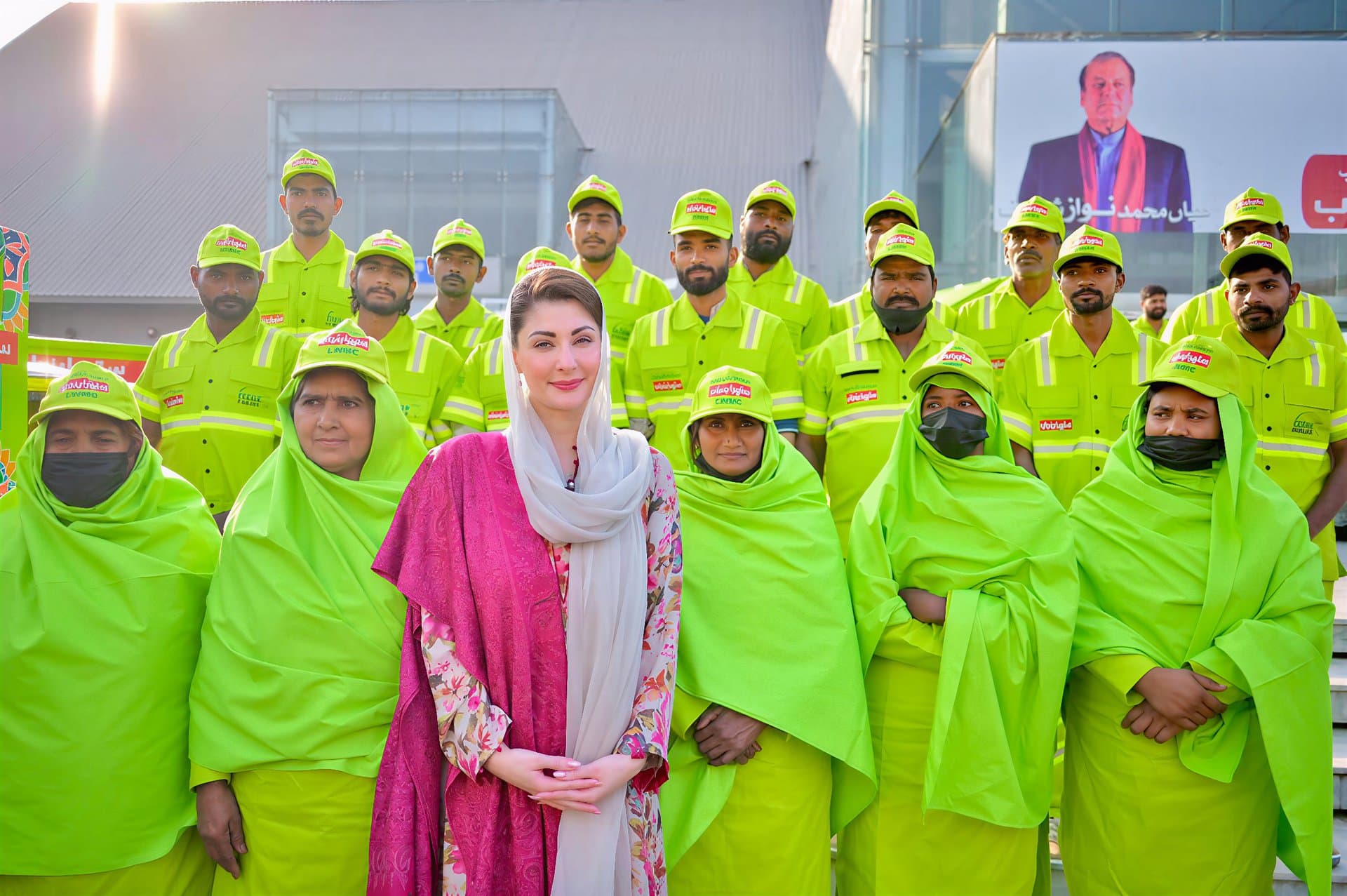
Home
Discover Suthra Punjab's vision for transforming waste management across the province.

Standardised, data-driven operations across tehsils combine a large frontline workforce, a mixed vehicle fleet, TCPs, engineered disposal and digital monitoring to deliver daily, verifiable collection and rapid clearance of legacy hotspots.

Workforce: ~131,654 sanitation staff (103% of requirement) and 1,865 managerial staff (90%). Fleet: 25,382 vehicles (101%). Equipment: >303,000 units (110%). Containers: 55,377 (82% of need); TCPs: 497 (96%); landfill sites: 141 (101%).
Urban hand-carts to compactors; rural loader-rickshaws with drums on alternate days.
Temporary collection points are built with hard concrete surfaces and secure gates. Urban collection points are emptied daily, while rural points are cleared twice a week. All waste is transported to properly engineered landfill sites.
Photos and biometrics verify service for payment; missed beats incur penalties.

VTMS on vehicles, RFID weighbridges, geo-tagged photos and biometric/facial attendance create an auditable evidence chain. A KPI engine scores performance in real time and links to performance-based payments and penalties.
Suthra Punjab operates a standardized and technology-driven system across all tehsils in Punjab. The program brings together a large team of sanitation workers, a diverse fleet of waste collection vehicles, temporary collection points, modern disposal facilities, and digital monitoring systems. This ensures that waste is collected daily, verified properly, and legacy dumpsites are cleared rapidly.
The program currently employs approximately 131,654 sanitation workers and 1,865 management staff. Our fleet includes 25,382 waste collection vehicles and over 303,000 equipment units. The infrastructure comprises 55,377 waste containers, 497 temporary collection points, and 141 landfill sites across Punjab. To date, more than 6 million tons of waste have been collected with a 98% complaint resolution rate.
Every vehicle is equipped with tracking systems, and all landfills use digital weighbridges with identification technology. Workers use location-tagged photographs and biometric attendance to create a complete, verifiable record. A performance monitoring system scores operations in real-time and determines payments and penalties based on actual service delivery.

In urban areas, waste is collected daily using hand-carts and compactor vehicles. In rural areas, loader-rickshaws equipped with drums collect waste from households on alternate days.
Hard pads and gated sites; daily urban emptying, twice-weekly rural, to engineered landfills.
Service delivery is verified through photographs and biometric attendance before payments are processed. If scheduled waste collection rounds are missed, financial penalties are applied to ensure accountability.

Comprehensive collection, transfer, and disposal infrastructure operating across Punjab.
Door-to-door waste pickup in urban/semi-urban areas.
Mechanical lifting from communal points.
Scheduled waste pickup from designated points.
Optimize routes and reduce transportation costs.
Engineered, weight-tracked disposal sites.
Manual sweeping, desilting, washing (manual & mechanical).
Comprehensive collection, transfer, and disposal infrastructure operating across Punjab.
Door-to-door waste pickup in urban/semi-urban areas.
Mechanical lifting from communal points.
Scheduled waste pickup from designated points.
Optimize routes and reduce transportation costs.
Engineered, weight-tracked disposal sites.
Manual sweeping, desilting, washing (manual & mechanical).






Province-wide MRFs and compost hubs recover recyclables and organics, supplying RDF/biogas streams and reducing landfill dependence.
VTMS, RFID weighbridges, geo-tagged photos and biometric attendance feed a KPI engine that verifies service and links payments to performance.
Urban hand-carts and compactors; rural loader-rickshaws and drums with scheduled beats and evidence-based verification.
Protected waste disposal sites with waterproof liners, liquid waste collection ponds, gas capture systems, and daily soil covering to reduce harmful emissions.

In cities, sanitation workers use hand-carts and street containers to collect waste daily, which is then transferred to compactor trucks. In rural areas, collection vehicles cover approximately 250 households every other day using strategically placed waste drums.
Every collection is verified through location-tagged photographs taken before and after service, along with worker attendance records. This ensures that payments are made only for completed work, with automatic deductions for missed collections.

TCPs with hard pads and gated enclosures are emptied daily in urban and twice-weekly in rural areas, feeding engineered landfills with liners and leachate ponds.
Typical tehsil landfill: 10-acre controlled site with a 3-ft compacted clay barrier, leachate pond and a 60 t pit-less weighbridge.

VTMS on every vehicle, RFID weighbridges, geo-tagged photos and biometric attendance provide an immutable evidence chain.
A KPI engine scores performance in real time and links to performance-based payments and penalties.

Deployed workforce ~131,654 (103%) and 25,382 vehicles (101%) keep streets clean with surge capacity for festivals and monsoon seasons.
More than 6 million tons collected to date (82% of estimated generation); complaint resolution at 98%.

Discover Suthra Punjab's vision for transforming waste management across the province.

Stay updated with the latest news, announcements, and milestones from Suthra Punjab.

Reach out for partnerships, media inquiries, careers, or support— our team will get back to you promptly.